“Fake it till you make it! He’s just naturally confident. She was born with huge self-confidence. I’ll never have the confidence to do that.” – lots of people all the time.
When it comes to confidence, self-confidence and developing both, are you clear on what’s realistic, achievable and what’s not? It’s long been a subject I wanted to explore deeper. Over the years, I’ve been reading and hearing a lot of conflicting approaches to develop this very important feeling. Some sounded convincing, others more like click bait.
Through my own journey of self-development, and from my experiences coaching & mentoring others, both confidence, and self-confidence, or lack of, are very frequent talking points. With a lot of misconceptions. My aim with this piece was to (selfishly) get very clear on the subject myself first, and then share the findings with others (not so selfishly). In truth, putting this together was a challenge. And actually, sharing it, in itself, required a degree of both self-confidence and confidence that I maybe didn’t a couple of years ago. I’m hopeful that it’s a piece you find valuable and provides you with some simple steps to develop your own confidence. It does come with a warning, as many of these ‘how to’ pieces tend to. Self-discipline, practice, and commitment are required.
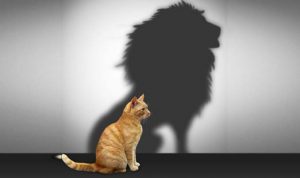 Confidence v Self-Confidence?
Confidence v Self-Confidence?
Let’s pause for a second. Can you clearly explain the difference between
confidenceand
self-confidence? What comes to mind? You probably intuitively know the distinction but when I’ve asked people to describe them, it’s not always easily done. This is important because when trying to develop and grow either, it’s good to know which one needs the attention.
Confidence is defined as ‘the feeling or belief that one can have faith in or rely on
someone or
something.’ It’s more of an
outward feeling. This comes from knowledge and practice. The more experience you have, the more confident you will become. For example, through writing other articles and developing my own style somewhat, I have a certain level of confidence how this article will be received. Another example came to me when in a Bikram Yoga class at the weekend. Over the last year, I have built up a level of confidence in my practice. I can do some of the positions with confidence. Others, not so much.
Self-confidence is defined as ‘a feeling of trust in one's abilities, qualities, and judgment.’ It’s
inward looking. It’s about trusting yourself and your ability to succeed at new challenges, tasks, and opportunities. The big thing with self-confidence is having a belief in
yourself that you can get that job, deliver that presentation, or deal with that difficult situation in work or a relationship. Back when I started to write articles on topics I’m very interested in, I had the self-confidence that I could do this. The same could be said with Bikram Yoga before my first class. I knew I could stick it out, despite not having done it before.
When I’m in coaching mode, over and over again, confidence comes up as a pain point. But many times, what the client thinks is a confidence issue is a self-confidence one. Or vice versa. Time spent getting clear on what it means at the outset is time well spent.
Buyer Beware - Self-confidence quick fixes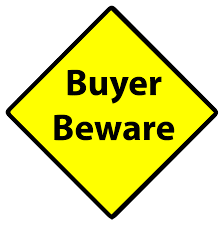
We’re living in interesting times. People will try to sell you, literally, anything. A fast-acting guaranteed dose of self-confidence the order of the day on many self-help sites or pop-ups. My advice here is to think before you dive in. Like most things in life, quick fixes fade fast. And during the course of putting this together, I identified a few reported self-confidence boosters that you should be wary of. This will also serve to help you get over some of the things you’re telling yourself about confidence that’s holding you back! Some of the main myths I’ve found are:
- Confidence – you’re just born with it!
How often have you heard someone say “some people were just born full of self-confidence? I know I’ll never have that kind of confidence no matter how much I practice.” This is a myth backed up by research. Confidence is not innate. And if you’re thinking this way, you’re falling into a
fixed mindset trap. You’re making excuses. Another way of looking at it is you have a
limiting belief. You can grow and develop your confidence.
- Fake it till I make it!
The power pose, made famous by Amy Cuddy, has you standing like a Superhero before you do something that you’re scared of. It’s meant to boost your self-confidence. And in a short burst, for many, it works. A quick hit. Since this became popular in 2012, there has been a lot of science to refute it. It fell into the ‘pseudoscience’ category. While there is a lot of debate still on this (read
here), both for and against, I’m putting it into the category of a myth when it comes to building
lasting self-confidence.
While it’s very a catchy tagline, faking it for me is being
inauthentic. And that’s a core value that I’m not keen on breaking. You might get that momentary hit of dopamine but a couple of minutes into your presentation, the doubts could return. It’s better to build your self-confidence in an authentic way,
over time.
- Build up confidence first, then take the action
I had always been nervous, even scared, of presenting to large groups. For years growing up, all through my twenties and well into my thirties, I had no confidence in it. No matter how hard I tried to build up my confidence beforehand, by watching videos, breathing deeply, and practicing out-loud, nothing really prepared me for the actual presentation. The actual thing. It’s only through the actual doing, did my confidence start to grow. So, don’t keep waiting until you’re ready. Until everything is perfect. Take the action even when you’re not ready & learn.
- Self-confidence building takes years
While there are no overnight successes, it’s more about frequency than duration. If you’re going to the gym every day for a month, you’ll see great improvements quickly. It’s the repetitions that are incremental overtime that develop muscles. The same with self-confidence. If you do one presentation per month over a year, I’ve learned, the improvement is slow, sometimes not at all. If I managed to do one per week, the compounding interest effect and improvement is much more noticeable.
 The confidence gym!
The confidence gym!
There isn’t a day that passes where I don’t feel a lack of self-confidence in one area or another. Now though, through developing self-awareness, it’s something I accept as normal and expected. The good news is, like a lot of other competencies related to feelings and emotions, it’s very flexible. You can strengthen it. Just like a muscle. With training, it can grow. This muscle comparison is one that you’ve probably seen a lot of lately. Just like practicing mindfulness, willpower, listening, questioning and others. All need care and feeding. Otherwise, they can regress back to a limper version of its former self. Thankfully though, you’re in control. And no expensive gym membership fee needed too.
So, to the How. Let’s explore a few that I feel are key.
- Build Knowledge
Have you ever had to do a presentation at work where you didn’t really have a high level of interest in the subject matter? Maybe something technical that you just didn’t know well enough but said you’d give it a go anyway? How did that turn out? Did you find yourself out of your depth? Wanting to just ‘get it over with’?
Contrast that to talking about something you’re passionate about? Something you’re invested in and believe in fully? Would you have trouble shutting up? That you’re so comfortable with the topic that the confidence oozes out of you.
If you’re not well read or well invested into the area, it’s going to be next near impossible to be confident about it. So, either do your homework on it and know it well or maybe try to skip it. Back to our myth busting, it’s hard to fake it if you’re not invested.
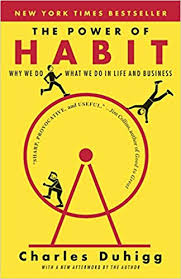
- Deliberate Practice to develop skills – Hard & Soft.
In his book ‘
The power of habits’,Charles Duhigg talks about skill as a type of work or activity you can do on any given day and expect the same result or output. So driving is a skill. Typing at a particular speed is a skill. Computer Programming. These would be considered ‘
hard skills.’
Then we have ‘soft skills’ like leadership, communications, and influencing for example. As you build up these skills, through action,----- your confidence in them grows.
While the hard skills tend to be more static once learned (like riding a bike), the softer ones are more like our muscle analogy. They need regular work to keep them supple and strong. Deliberate practice required.
- The Power of Habits & virtuous confidence cycles
Again, I’m pulling on a reference from the book mentioned above. It’s one of those books that, when you read it, you start to understand more clearly why we do somethings we do. It explains what we already know intuitively. Anyway, in it, as the name suggests, the science behind habits is explained in great detail.
In short, every habit or routine we have is based on a cue or trigger as the starting point that leads to a reward. The routine part, or habit is the ‘what’ we do to get there.
By raising your understanding about how habits work further, it becomes even clearer that the confidence myths are just that. So, if you know by taking action, you’ll fail, make mistakes, learn, and improve, your rewards will come. It’s about doing this over and over. And the confidence will grow. The virtuous circle forms.
- Spotting your Limiting Beliefs and choosing Better thoughts!
How often today have you given into a limiting belief? Do you even notice it happening? Every day now, I catch my inner voice, inner gremlin, or devil, saying you can’t do this, or you’re not good enough to do that, and the story continues.
The truth and realisation were this have always been happening. I had just assumed what was coming up was a fact. I believed the narrative. I accepted it as truth. And, definitely on days where tiredness, being a bit hungover perhaps, or both might have been in play, the story would be worse, and I believed it even more.
As I developed a mindfulness practice over the last few years however, I started to observe this dialogue much more clearly. I began to see it for what it was and is. Just a stream of never-ending information flowing around in my head. We all have it. It’s part of being human.
And by becoming more conscious of these thoughts, I was able to stop buying into them. Then a change started to happen. A positive one. By creating that gap and developing the awareness of what was going on
upstairs, it made a difference. That led to a change in belief. The limiting beliefs I had placed on myself were questioned, challenged and, ultimately, changed. Through taking positive steps, and learning along the way, I started to remove the limits I set. I started to widen the boundaries of what I could do. Turning
can’t into
can.
Confidence is really about choosing better thoughts - saying to yourself, "I am capable" and "if I try this I might fail, but I will learn and succeed from that failure".
- Act, fail, learn, repeat.
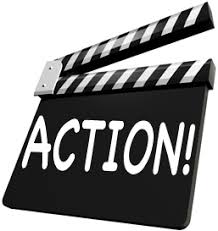
This is the last and most essential confidence booster of all. Without action, you’re just dreaming of what might be. You have to take the risk and jump in, lean in, dive in, or whatever ‘in’ you care to choose. I know it sounds simple. It’s not always the case. Perhaps your gremlin outlined in #4 above is now telling you all the reasons why it’s not, limiting your beliefs again? It’s just about taking the first step.
Do you remember what it was like when you drove for the first time? Terrifying? About a day after I bought my first car, and only after a few lessons, I took it upon myself to drive the 2-hour drive from home to where I was working at the time. I remember setting out that evening. It was dark and raining heavily. Time seemed to slow down. I felt glued to the seat and my hands were gripping the steering wheel so tightly I was leaving an imprint on it. I was so inexperienced, nervous and edgy all the way. The relief of getting there safely was huge. But I knew that it was essential in my moving forward and gaining self-confidence. The next day, was a bit easier, and then within a few weeks, it started to become automatic. It might be a trivial example, but it’s one I’ve applied to other challenges in my personal and professional life.
Take action. Make mistakes. Learn. And make incremental steps forward. The confidence will grow. The muscle gets stronger.
Over the years, I’ve identified some tools & approaches to experiment with when moving your confidence levels from left to right. Being wrong on purpose, saying yes to something you normally would say no to, tracking your negative thoughts on in a daily journal are just 3 simple ones. All require you to take action. All will lead to progress (for more, drop me an
email). The important piece is here to take the first step. And to start measuring your progress. To make it more tangible.
You might say there is a paradox at play here. To grow your confidence, you have to take risks. Yet, you avoid taking risks, because you don’t feel confident enough? As is the case with many of challenges in life, there can be paradoxes at play. Like anything you want to improve however, having discipline is essential. And knowing that meaningful change takes time and effort. But it’s worth it.
Please do let me know if this was useful? Are there other topics you’d be interested in reading about? Let me know.
Thanks for reading & Good luck with it.
Rob is a qualified Executive Coach (ACC with ICF) and has been Mentoring and Coaching over the last decade in various roles held during his career. In 2017, Rob launched the Rob of the Green Platform which hosts the 1% Better Podcast. Rob currently is a director of Project Management and Leadership Coaching at Dell in Cork, Ireland. Rob also publishes articles on productivity, goal setting, meditation, and other topics, like this one! Rob recently published an eBook on giving up alcohol for 2018 called ‘Dry18’ and can be downloaded for free here.
Connect in with Rob on the socials or via email on the links below:
Email Twitter Facebook Website
Subscribe to the Rob of the Green Newsletter Here
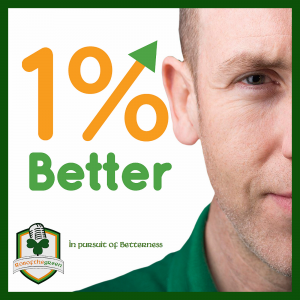

 Confidence v Self-Confidence?
Let’s pause for a second. Can you clearly explain the difference between confidenceand self-confidence? What comes to mind? You probably intuitively know the distinction but when I’ve asked people to describe them, it’s not always easily done. This is important because when trying to develop and grow either, it’s good to know which one needs the attention.
Confidence is defined as ‘the feeling or belief that one can have faith in or rely on someone or something.’ It’s more of an outward feeling. This comes from knowledge and practice. The more experience you have, the more confident you will become. For example, through writing other articles and developing my own style somewhat, I have a certain level of confidence how this article will be received. Another example came to me when in a Bikram Yoga class at the weekend. Over the last year, I have built up a level of confidence in my practice. I can do some of the positions with confidence. Others, not so much.
Self-confidence is defined as ‘a feeling of trust in one's abilities, qualities, and judgment.’ It’s inward looking. It’s about trusting yourself and your ability to succeed at new challenges, tasks, and opportunities. The big thing with self-confidence is having a belief in yourself that you can get that job, deliver that presentation, or deal with that difficult situation in work or a relationship. Back when I started to write articles on topics I’m very interested in, I had the self-confidence that I could do this. The same could be said with Bikram Yoga before my first class. I knew I could stick it out, despite not having done it before.
When I’m in coaching mode, over and over again, confidence comes up as a pain point. But many times, what the client thinks is a confidence issue is a self-confidence one. Or vice versa. Time spent getting clear on what it means at the outset is time well spent.
Buyer Beware - Self-confidence quick fixes
Confidence v Self-Confidence?
Let’s pause for a second. Can you clearly explain the difference between confidenceand self-confidence? What comes to mind? You probably intuitively know the distinction but when I’ve asked people to describe them, it’s not always easily done. This is important because when trying to develop and grow either, it’s good to know which one needs the attention.
Confidence is defined as ‘the feeling or belief that one can have faith in or rely on someone or something.’ It’s more of an outward feeling. This comes from knowledge and practice. The more experience you have, the more confident you will become. For example, through writing other articles and developing my own style somewhat, I have a certain level of confidence how this article will be received. Another example came to me when in a Bikram Yoga class at the weekend. Over the last year, I have built up a level of confidence in my practice. I can do some of the positions with confidence. Others, not so much.
Self-confidence is defined as ‘a feeling of trust in one's abilities, qualities, and judgment.’ It’s inward looking. It’s about trusting yourself and your ability to succeed at new challenges, tasks, and opportunities. The big thing with self-confidence is having a belief in yourself that you can get that job, deliver that presentation, or deal with that difficult situation in work or a relationship. Back when I started to write articles on topics I’m very interested in, I had the self-confidence that I could do this. The same could be said with Bikram Yoga before my first class. I knew I could stick it out, despite not having done it before.
When I’m in coaching mode, over and over again, confidence comes up as a pain point. But many times, what the client thinks is a confidence issue is a self-confidence one. Or vice versa. Time spent getting clear on what it means at the outset is time well spent.
Buyer Beware - Self-confidence quick fixes We’re living in interesting times. People will try to sell you, literally, anything. A fast-acting guaranteed dose of self-confidence the order of the day on many self-help sites or pop-ups. My advice here is to think before you dive in. Like most things in life, quick fixes fade fast. And during the course of putting this together, I identified a few reported self-confidence boosters that you should be wary of. This will also serve to help you get over some of the things you’re telling yourself about confidence that’s holding you back! Some of the main myths I’ve found are:
We’re living in interesting times. People will try to sell you, literally, anything. A fast-acting guaranteed dose of self-confidence the order of the day on many self-help sites or pop-ups. My advice here is to think before you dive in. Like most things in life, quick fixes fade fast. And during the course of putting this together, I identified a few reported self-confidence boosters that you should be wary of. This will also serve to help you get over some of the things you’re telling yourself about confidence that’s holding you back! Some of the main myths I’ve found are:
 The confidence gym!
There isn’t a day that passes where I don’t feel a lack of self-confidence in one area or another. Now though, through developing self-awareness, it’s something I accept as normal and expected. The good news is, like a lot of other competencies related to feelings and emotions, it’s very flexible. You can strengthen it. Just like a muscle. With training, it can grow. This muscle comparison is one that you’ve probably seen a lot of lately. Just like practicing mindfulness, willpower, listening, questioning and others. All need care and feeding. Otherwise, they can regress back to a limper version of its former self. Thankfully though, you’re in control. And no expensive gym membership fee needed too.
So, to the How. Let’s explore a few that I feel are key.
The confidence gym!
There isn’t a day that passes where I don’t feel a lack of self-confidence in one area or another. Now though, through developing self-awareness, it’s something I accept as normal and expected. The good news is, like a lot of other competencies related to feelings and emotions, it’s very flexible. You can strengthen it. Just like a muscle. With training, it can grow. This muscle comparison is one that you’ve probably seen a lot of lately. Just like practicing mindfulness, willpower, listening, questioning and others. All need care and feeding. Otherwise, they can regress back to a limper version of its former self. Thankfully though, you’re in control. And no expensive gym membership fee needed too.
So, to the How. Let’s explore a few that I feel are key.


